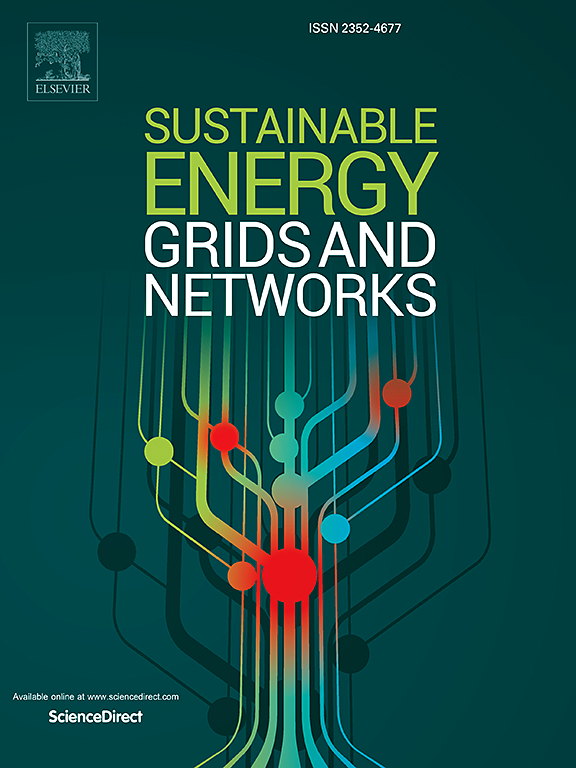Proactive scheduling of transactive multi-carrier microgrids under base interruptible program: A Bi-level model approach
IF 4.8
2区 工程技术
Q2 ENERGY & FUELS
引用次数: 0
Abstract
Power systems are susceptible to disruptions caused by natural disasters, leading to significant financial losses for distribution companies. The versatility of multi-carrier microgrids (MCMGs) in meeting the needs of various carriers, such as electricity and heat, has garnered considerable interest. The focus of this paper is on how transactive multi-carrier microgrids (TMCM) contribute to improving the resilience of energy systems during prolonged outages. A bi-level proactive day-ahead scheduling model of TMCMs is introduced herein that not only achieves optimal normal operation cost, but also ensures the maximum demand serving of power, heat, gas and hydrogen carriers during outages. The base interruptible program (BIP) ensures a successful and economically efficient way to ride through outage conditions, serving as an emergency demand response resource for the TMCM. Furthermore, each MCMG has its designated 24-hour marginal price that enables the power transaction among the MCMGs at both the normal and outage condition. The bi-level model is converted into a single-level scheduling model by applying the Karush-Kuhn-Tucker (KKT) condition. This approach utilizes a two-stage reformulation method to handle the integer variables. The simulation reveals that the need to sell power from MCMG 1 during the outage period has led to the supply of electricity in the market for six hours during peak time. Despite the only-power operation mode in five hours of the possible outage period, due to the high thermal load of microgrid 1, one of the CHP units is dispatched to produce 50–100 kW in cogeneration mode at 11:00–13:00.
求助全文
约1分钟内获得全文
求助全文
来源期刊

Sustainable Energy Grids & Networks
Energy-Energy Engineering and Power Technology
CiteScore
7.90
自引率
13.00%
发文量
206
审稿时长
49 days
期刊介绍:
Sustainable Energy, Grids and Networks (SEGAN)is an international peer-reviewed publication for theoretical and applied research dealing with energy, information grids and power networks, including smart grids from super to micro grid scales. SEGAN welcomes papers describing fundamental advances in mathematical, statistical or computational methods with application to power and energy systems, as well as papers on applications, computation and modeling in the areas of electrical and energy systems with coupled information and communication technologies.
 求助内容:
求助内容: 应助结果提醒方式:
应助结果提醒方式:


